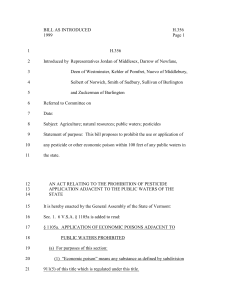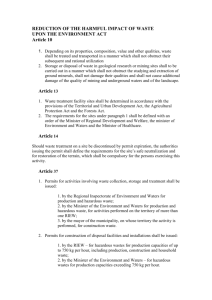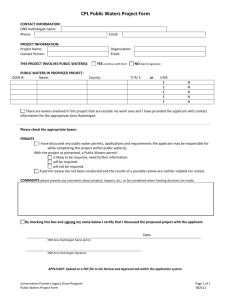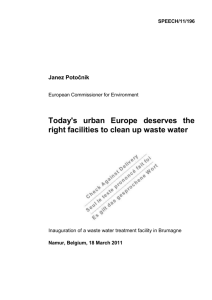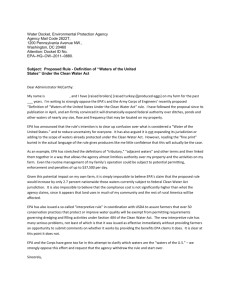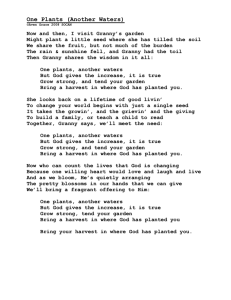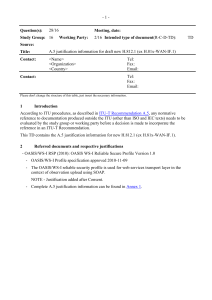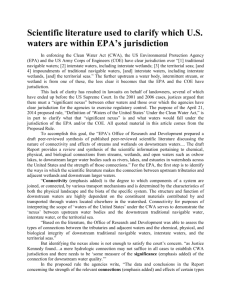DOC - ncrules.state.nc.us
advertisement
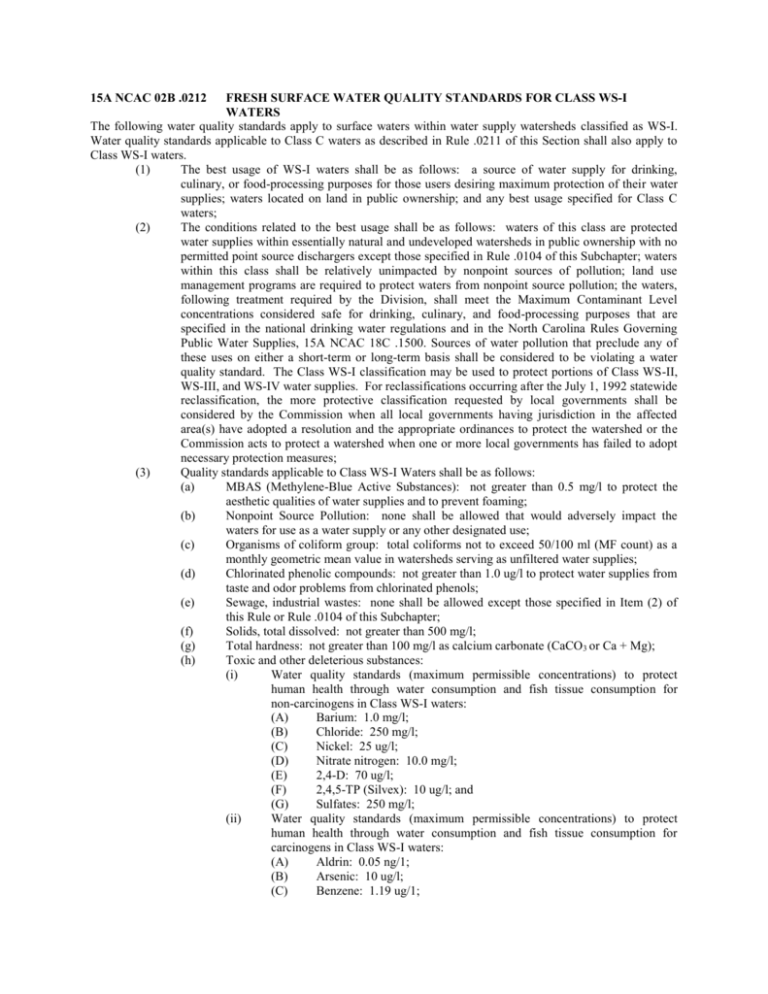
15A NCAC 02B .0212 FRESH SURFACE WATER QUALITY STANDARDS FOR CLASS WS-I WATERS The following water quality standards apply to surface waters within water supply watersheds classified as WS-I. Water quality standards applicable to Class C waters as described in Rule .0211 of this Section shall also apply to Class WS-I waters. (1) The best usage of WS-I waters shall be as follows: a source of water supply for drinking, culinary, or food-processing purposes for those users desiring maximum protection of their water supplies; waters located on land in public ownership; and any best usage specified for Class C waters; (2) The conditions related to the best usage shall be as follows: waters of this class are protected water supplies within essentially natural and undeveloped watersheds in public ownership with no permitted point source dischargers except those specified in Rule .0104 of this Subchapter; waters within this class shall be relatively unimpacted by nonpoint sources of pollution; land use management programs are required to protect waters from nonpoint source pollution; the waters, following treatment required by the Division, shall meet the Maximum Contaminant Level concentrations considered safe for drinking, culinary, and food-processing purposes that are specified in the national drinking water regulations and in the North Carolina Rules Governing Public Water Supplies, 15A NCAC 18C .1500. Sources of water pollution that preclude any of these uses on either a short-term or long-term basis shall be considered to be violating a water quality standard. The Class WS-I classification may be used to protect portions of Class WS-II, WS-III, and WS-IV water supplies. For reclassifications occurring after the July 1, 1992 statewide reclassification, the more protective classification requested by local governments shall be considered by the Commission when all local governments having jurisdiction in the affected area(s) have adopted a resolution and the appropriate ordinances to protect the watershed or the Commission acts to protect a watershed when one or more local governments has failed to adopt necessary protection measures; (3) Quality standards applicable to Class WS-I Waters shall be as follows: (a) MBAS (Methylene-Blue Active Substances): not greater than 0.5 mg/l to protect the aesthetic qualities of water supplies and to prevent foaming; (b) Nonpoint Source Pollution: none shall be allowed that would adversely impact the waters for use as a water supply or any other designated use; (c) Organisms of coliform group: total coliforms not to exceed 50/100 ml (MF count) as a monthly geometric mean value in watersheds serving as unfiltered water supplies; (d) Chlorinated phenolic compounds: not greater than 1.0 ug/l to protect water supplies from taste and odor problems from chlorinated phenols; (e) Sewage, industrial wastes: none shall be allowed except those specified in Item (2) of this Rule or Rule .0104 of this Subchapter; (f) Solids, total dissolved: not greater than 500 mg/l; (g) Total hardness: not greater than 100 mg/l as calcium carbonate (CaCO3 or Ca + Mg); (h) Toxic and other deleterious substances: (i) Water quality standards (maximum permissible concentrations) to protect human health through water consumption and fish tissue consumption for non-carcinogens in Class WS-I waters: (A) Barium: 1.0 mg/l; (B) Chloride: 250 mg/l; (C) Nickel: 25 ug/l; (D) Nitrate nitrogen: 10.0 mg/l; (E) 2,4-D: 70 ug/l; (F) 2,4,5-TP (Silvex): 10 ug/l; and (G) Sulfates: 250 mg/l; (ii) Water quality standards (maximum permissible concentrations) to protect human health through water consumption and fish tissue consumption for carcinogens in Class WS-I waters: (A) Aldrin: 0.05 ng/1; (B) Arsenic: 10 ug/l; (C) Benzene: 1.19 ug/1; (D) (E) (F) (G) (H) (I) (J) (K) (L) (M) (N) (O) (P) History Note: Carbon tetrachloride: 0.254 ug/l; Chlordane: 0.8 ng/1; Chlorinated benzenes: 488 ug/l; DDT: 0.2 ng/1; Dieldrin: 0.05 ng/1; Dioxin: 0.000005 ng/l; Heptachlor: 0.08 ng/1; Hexachlorobutadiene: 0.44 ug/l; Polynuclear aromatic hydrocarbons (total of all PAHs): 2.8 ng/l; Tetrachloroethane (1,1,2,2): 0.17 ug/l; Tetrachloroethylene: 0.7 ug/l; Trichloroethylene: 2.5 ug/l; and Vinyl Chloride: 0.025 ug/l. Authority G.S. 143-214.1; 143-215.3(a)(1); Eff. February 1, 1976; Amended Eff. January 1, 2015; May 1, 2007; April 1, 2003; October 1, 1995; February 1, 1993; March 1, 1991; October 1, 1989.


